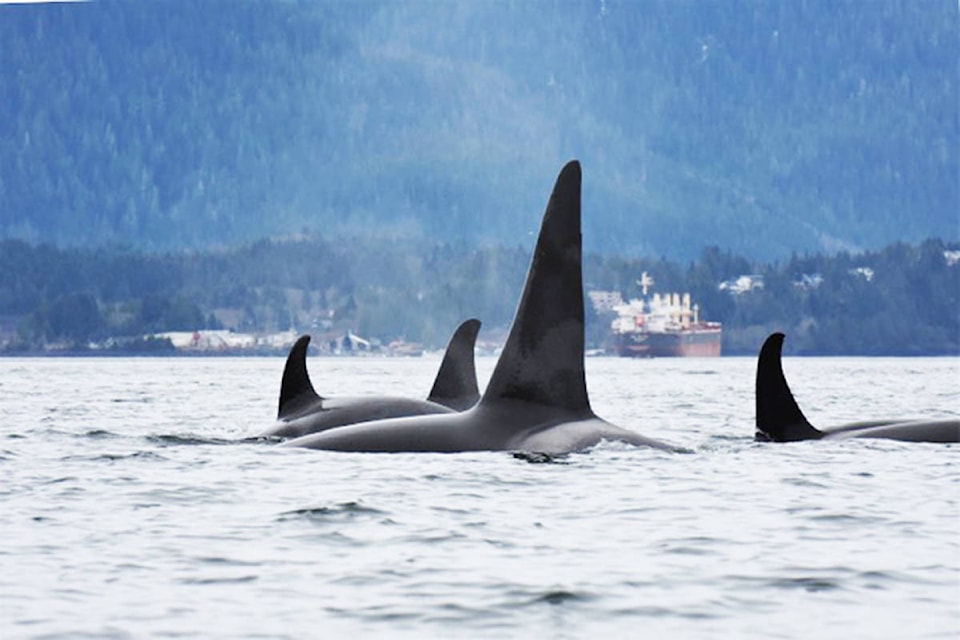Prince Rupert had a welcomed visit from a pod of killer whales on April 13. The Orca family of seven, headed by the matriarch, was accompanied by her five off-spring, and a new calf. They were spotted between Vigilant Island and Shreiber Point.
Joe Zelwietro, a field researcher for a non-profit whale research organization is usually based in Victoria, and happened to spot the whales from the deck of his parents house in P.R.
“I grabbed my kayak and paddled out to them,” Zelwietro said. “I recognized them and was with them for a couple of hours between 1 p.m. and 3 p.m.”
READ MORE: Northern resident killer whale numbers reach record high
Zelwietro said the pod, known as A5, initially entered the harbour in the early morning and spent the afternoon bouncing back and forth in the water, where he was able to take some photos of them at a safe social distancing length with a zoom lens.
Isolation and travel restrictions meant nothing to this family, as the whales were more than likely visiting for a good meal of fish, such as salmon. This particular family is a ‘Resident’ family of killer whales who are part of the northern whale community and hunt fish for food, while swimming up and down the coast. There are other pods who are sometimes seen in the area which are ‘Bigg’s ’ killer whales and they feed on mammals such as sea lions.
The A5 family of Orcas or Northern Resident Killer Whales is considered threatened under the Canadian Species at Risk Act.
Zelwietro said this whale family was seen off Bowen Island, north of Vancouver a couple of months ago.
“They will swim up as far as south-east Alaska, but this is pretty far north for them. It’s interesting because they were so far south. Now, just two months later, here in Prince Rupert they are so far north” Zelwietro said.
READ MORE: VIDEO AND STORY: Best Boating Practices: How to avoid whales when out on the water
The pod was recognized by Zelwietro, who explained the dorsal fin and saddle patch on whales are like a unique finger print and that is how they are identified. Whale pods are photographed and catalogued for reference. The Department of Oceans and Fisheries has records of each whale and family, sort of like a family album, which is available on-line. Due to his occupation, Zelwietro had his own records and was able to reference the family from there.
“Whale families stay together most of their lives, ” Zelwietro said, “They follow the mother. The father would have come from a different pod, and then gone back to his own mother and family.”
The A5 family has suffered quite a bit of loss since first being catalogued. During the 1970s a whole generation of the pod was captured several times to take young orcas to aquariums around the world. Almost all of a whole generation was taken, with only one surviving member today who is still in captivity in the U.S.A.
The northern resident community of whales which swim from Vancouver Island to Haida Gwaii, and up to Alaska like to take refuge in inlets and bays. They are divided in to three vocally distinctive clans. The A5 pod belongs to the A clan. There is also the G clan and the R clan.
K-J Millar | Journalist
Send K-J email
Like the The Northern View on Facebook
Follow us on Twitter
